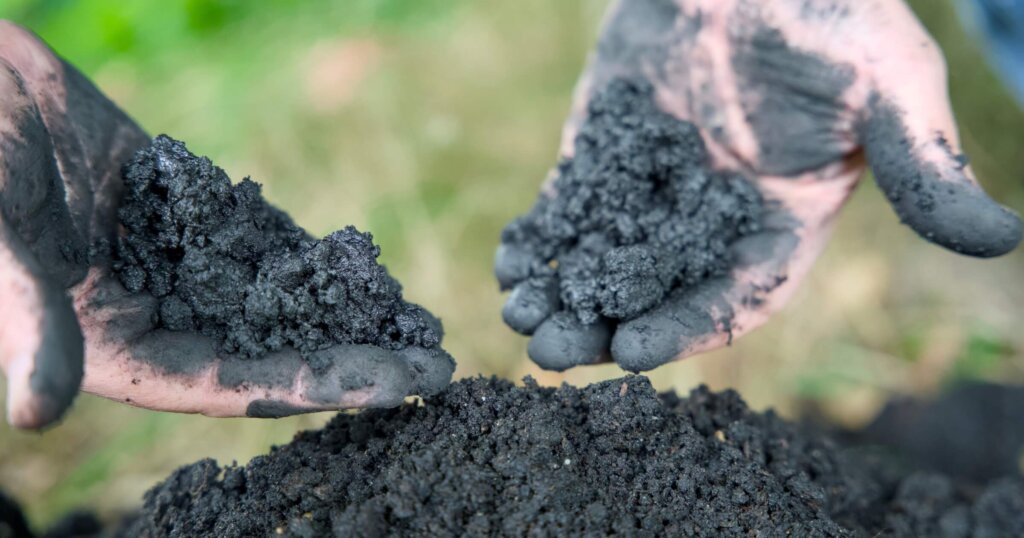Cement is one of the biggest global sources of carbon emissions, and with construction booming, the need for greener solutions has never been greater. One material gaining attention is biochar, a carbon-rich product made from plant and organic waste. When added to concrete, biochar can cut emissions, lock away carbon, and even improve performance, offering a pathway to more sustainable building.
Quick look
- Made from plant waste, biochar reduces emissions, stores carbon long-term, and improves concrete strength and durability.
- Adding 1–2% biochar can boost compressive strength by up to 19% and improve thermal performance by reducing porosity and conductivity.
- Biochar supports carbon sequestration and circular economy goals by turning organic waste into a long-lasting construction material.
- Challenges such as dosage optimization, supply consistency, and a lack of standardization must be addressed for broader industry adoption.
What biochar is and why it matters for cement
Biochar is a carbon-rich material made by heating plant or organic waste in a low-oxygen setting, a process known as pyrolysis. This turns the biomass into a stable, lightweight form of carbon that doesn’t easily break down over time.
Clinker, the main ingredient in cement, is also the biggest source of its carbon pollution. Mixing in biochar can cut back on clinker use and shrink concrete’s footprint, while also keeping carbon stored in the material for the long haul.
Even better, biochar’s carbon can remain trapped inside concrete for the building’s full lifespan, and often much longer. The cement matrix shields the biochar, preserving it for hundreds or even thousands of years. That adds lasting carbon-storage value over the life cycle of a structure.
Mechanical and durability benefits of biochar in concrete
Beyond lowering emissions, biochar can also enhance the performance of concrete. From strength to flexibility, it offers several mechanical and durability benefits.
Enhanced concrete strength and reduced porosity
When small amounts of biochar, about 1 to 2% of the cement weight, are added to concrete, it can make the mix stronger and less porous. In fact, one study showed that replacing cement with just 2% biochar increased compressive strength by nearly 19%, tensile strength by about 20%, and flexural strength by around 12%. A wider review of many studies found strength improvements ranging from 3 to 13% when plant-based biochar was used, and even better results when biochar was finely ground or used in small amounts. The tiny pores in biochar help concrete dry evenly and form a tighter bond, allowing it to resist cracks and keep water out.
Improved mechanical properties and thermal performance
Beyond strength, biochar also helps concrete better handle stress and temperature fluctuations. It can make the material strong and flexible, thanks to its porous structure that lets it soak up and release water during curing. And because biochar has many tiny air pockets, it acts like insulation, making concrete less likely to conduct heat. That means buildings stay cooler in summer and warmer in winter, all while using less energy.
Potential for carbon-negative or carbon-neutral concrete
Using biochar to replace some of the cement reduces the use of clinker and lowers overall emissions. Because biochar is made from plant waste, the carbon in it stays trapped in the concrete instead of being released into the air. Over time, this can help concrete act like a carbon sponge. In the best cases, a building could store more carbon than it emits, making it carbon-neutral or even carbon-negative.
Environmental advantages and waste valorization
Biochar gives a second life to agricultural and forestry waste. When plant material, such as coffee grounds, sugarcane husks, or forestry residue, is heated without oxygen (pyrolyzed), it turns into biochar—a stable, carbon-rich solid that might otherwise be burned or waste away. This transformation helps keep organic waste out of landfills or open burns, channeling it into something useful, not just another trash pile. For instance, researchers at RMIT University in Australia turned used coffee grounds into biochar that replaced part of the sand in concrete. This not only used up organic waste but also made the concrete stronger and more sustainable, boosting strength by 30% and cutting cement use by up to 10%.

Biochar being used for agriculture. Photo courtesy of Shutterstock.
Biochar plays a key role in carbon sequestration and supports the circular economy. As a negative emissions technology, biochar locks carbon that plants absorbed during their growth into a form that can last for centuries, whether buried in soil or embedded in concrete. When biochar is used in concrete, it keeps carbon safely trapped inside buildings for the entire structure’s lifetime. This helps reduce greenhouse gases and turns waste into a durable, carbon-storing material.
Reducing cement demand also cuts reliance on heavy, energy-intensive industrial processes. Making cement clinker, the key ingredient in cement, requires heating limestone and clay to extremely high temperatures, consuming massive amounts of fuel and releasing substantial amounts of CO₂. By partially replacing clinker with biochar, the cement mix requires less clinker, which means less energy use and lower emissions overall.
Current challenges and considerations for adoption
While biochar shows exciting potential, there are still hurdles that must be addressed before it can become a mainstream material in concrete. These challenges range from balancing strength at different dosages to ensuring consistent supply and industry standards.
Optimizing dosage and long-term durability
While small additions of biochar, typically around 2 wt% of the cement weight, can enhance strength and reduce porosity, using higher amounts often leads to weakened performance. For instance, one study showed that increasing the biochar percentage beyond this threshold can reduce workability, density, and durability of the concrete mix. One report notes that while a 1 wt% addition gave better compressive strength than the control, higher doses led to a decline in strength.
In-depth research using optimization methods indicates that precise control over biochar content and particle size is vital. For example, a study using response surface methodology found that around 2.7% by weight of finely ground biochar (~51 µm) produced the best mechanical performance in cement mortar. More than 5% hurt strength.
These findings highlight the need for ongoing durability testing in real-world settings, rather than just laboratory studies, to ensure that biochar-enhanced concrete performs reliably under actual environmental and structural conditions.
Supply, standardization, and real validation
A major hurdle is the variability in biochar properties, which depends on feedstock type and production process. Without standardized production methods, ensuring consistent performance in concrete mixes is tough.
Standardization and certification frameworks for the use of biochar in structural concrete are currently lacking. That means even when performance is good, bringing such materials to market can be delayed or restricted.
Pilot projects and demonstrations are essential. For example, RMIT University in Australia successfully utilized coffee-waste biochar in a concrete footpath, which improved strength by ~30% and reduced cement use by up to 10%. Construction firms and local councils are now beginning to trial and scale this innovation.
To move forward at scale, the industry needs more demonstration projects, pilot installations, and clear validation pathways, backed by standards and real-world data, to build trust, refine best practices, and drive adoption.
Bottom line
Biochar is showing real promise as a way to green one of the most carbon-heavy building materials on the planet. It not only cuts cement-related emissions but also improves concrete’s durability, strength, and thermal performance. Plus, it stores carbon for the lifetime of a building, turning waste into a long-term environmental benefit.
That said, more research, pilot projects, and industry standards are needed before biochar can be widely adopted in construction. Scaling up production, ensuring consistent quality, and proving long-term durability in real-world conditions will be key steps forward.
As the construction industry searches for ways to reduce its carbon footprint, biochar is a practical solution that could help shift concrete toward a more sustainable future.
If you’re interested in exploring more about sustainable building innovations, check out:
- XtreeE 3D concrete printing
- Heat resistant concrete
- Leading methods to make concrete construction more sustainable
- Primekss crack-free jointless concrete
Stay updated on the latest in sustainable construction by subscribing to our newsletter.


